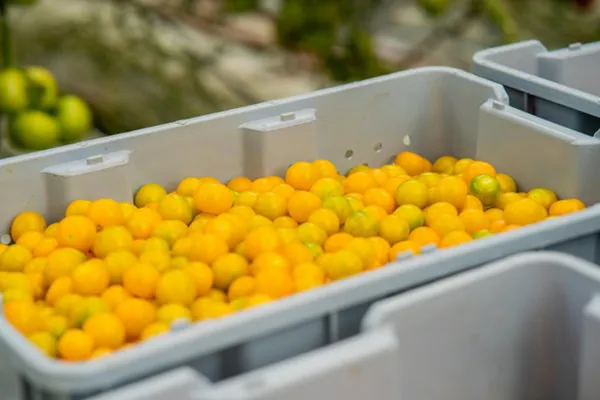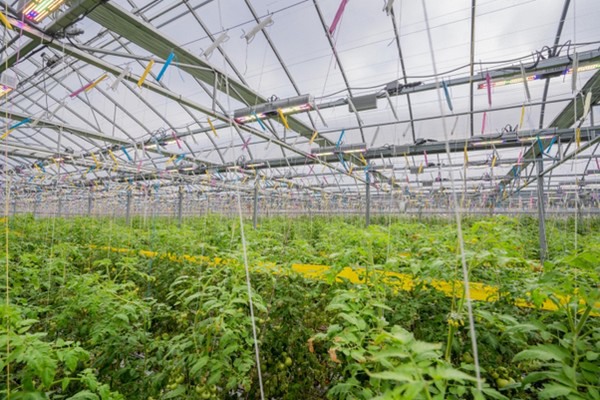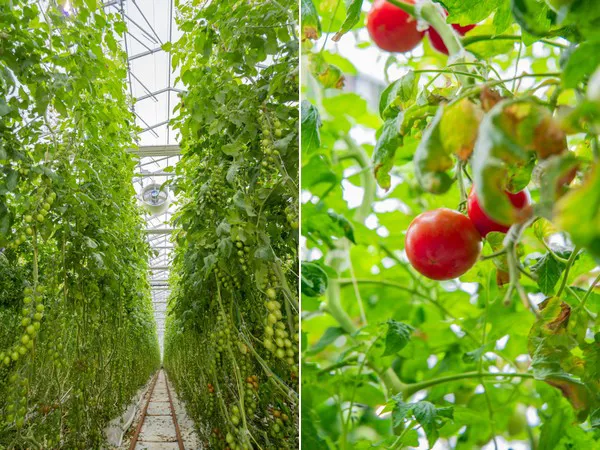For greenhouses in North America, this past year has been particularly dark. Of course, this doesn’t refer to global events that shook the world population. Rather, it has to be understood literally. “In Canada, it was darker than usual this winter, and it has continued into spring,” says Rose Séguin, an agronomist at Sollum Technologies. “Usually, growers stop using lights in April because the natural light levels are high enough that using lights doesn’t warrant the electrical bill.” On top of that, it’s also because keeping the lights on in spring when it’s mainly sunny doesn’t necessarily translate into a higher yield. “But this year, it has been a dark spring. So, people have continued using their lights until May to maintain yields in the spring months and catch up on the yield lost in January.”
While the increased energy prices may be a problem, Canadian growers haven’t struggled with that as much as their European colleagues. “We are not feeling the energy crisis to the same extent as, say, the Netherlands. However, it is still increasingly expensive, as are other greenhouse inputs.” To manage rising operating costs, there is an increased interest in any technology that improves resource use efficiency in greenhouses, such as the use of biostimulants for nutrient uptake and resilience and innovative screening techniques for energy savings.

“Despite the new technologies out there, growers haven’t had much of a choice and needed to keep the lights on longer than expected to reach their yield targets,” says Rose.
Lights on for tomatoes
This is especially true for tomato growers, who have to keep the lights on for some time. However, when the season is darker than usual, it means that those lights need to stay on for longer, impacting, even more, a grower’s bottom line. “The particularly tricky thing is that you keep the light on, but suddenly you get more sunlight. Or perhaps, there’s just so much sunlight, and yet, fixtures are still running, say, at 50%.” Rose is specifically talking about HPS, which can’t be dimmed as accurately as LEDs.
“On top of that, the heat produced by HPS affects the cultivation environment and can damage or wear out plants. Another disadvantage is that HPS always emits 10-15% far red light. While this can be beneficial in some cases, having high levels of far-red light can exhaust plants sooner.” Bluntly put, too much far-red light puts plants in overdrive. “For that reason, we recommend removing most of the far-red light as the spring progresses and we get enough from the sunlight. This allows us to save energy and wear out the plants less.”

Dynamic lighting
That is why Sollum offers a dynamic LED grow light solution. “With dynamic lighting, growers can adjust their intensity and spectrum according to natural light levels, with our rectification feature allowing lights to dim in real-time according to sunlight,” she says. In other words, Sollum’s fully dynamic solution automatically adjusts the light intensity so that plants get the exact amount of light they need. “Considering the light variations during the spring and autumn shoulder seasons, dynamic lighting has an edge over HPS and step-dimmable LED installations as they can perfectly dim the lights according to sunlight to provide no more than the target PPFD programmed by the grower.”
It goes without saying that dynamic LED grow lights offer additional control over the cultivation, all with the goal of providing plants with uniform lighting conditions tailored to the crop to produce the highest yield possible. “We follow up very closely with each of our growers to make sure we are reaching our goals and adjust the lighting and environment accordingly,” says Rose.

Everything begins with the lighting strategy prepared by the Sollum team in collaboration with the growers, followed by the addition of lighting recipes to the growers’ accounts. “Through our SUN as a Service® cloud platform, growers can set targets and thresholds so they can adjust the lighting strategy at any point throughout the season,” Rose says. “While we start with a set of recipes at the beginning of the season, we are constantly tweaking and adding recipes to help growers achieve their goals.”

As Rose points out, the various technologies available to growers can easily lead to an overwhelming amount of dashboards, data, equipment, etc. “We are aware of the overwhelm that growers are facing with the wave of new technologies, and we are working hard to integrate our solution with other systems to make insights easy to understand and implement,” says Rose. “We want to make sure that growers truly have control of the technologies being presented to them so that they can continue doing what they are best at growing high-quality produce.”
For more information: Rose Séguin, agronomist
Rose Séguin, agronomist
Sollum Technologies
[email protected]
sollumtechnologies.com
